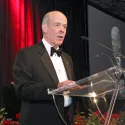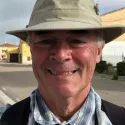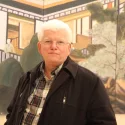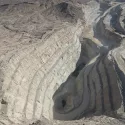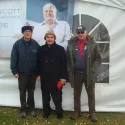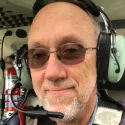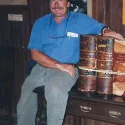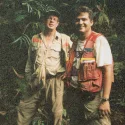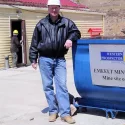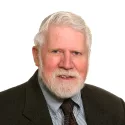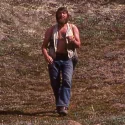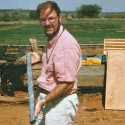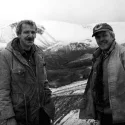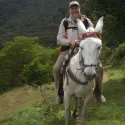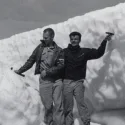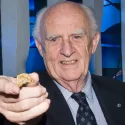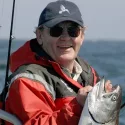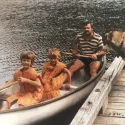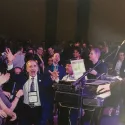Richard Conroy with Clay Lake nugget, 2018
What was the most fulfilling project you ever worked on, and why?
The discovery of a new district scale gold trend in the Longford – Down Massif in Ireland was the most fulfilling project that I ever worked on. I had previously been involved in the discovery of the Galmoy zinc orebodies in the 1980’s which led to the revival of the Irish base metal mining industry and to the recognition of Ireland as an international zinc province. Exciting though the discovery at Galmoy was, there were already precedents in Ireland in relation to base metals, such as the discoveries at Tynagh, and the world class zinc deposit at Navan. The discovery of the Longford – Down gold trend was of far greater import, and much more fulfilling, as it indicated that Ireland has significant potential for gold as well as for base metals. As a child, I had admired the magnificent Bronze Age gold ornaments in the National Museum of Ireland. These gold ornaments are worth seeing. They are some of the most superb Bronze Age gold ornaments in Europe. Curiously, however, despite the presence and uniqueness of these gold ornaments, and their public display, Ireland has not hitherto been regarded, in mining industry circles, as having the potential to host significant gold deposits. The discovery of a new, district scale gold trend, in the Longford-Down Massif strongly suggests that Ireland has the potential to host significant gold discoveries, as well as having the potential for world- class base metal discoveries.
What advice would you give to someone who is considering a career in the mineral industry?
The mineral industry is challenging and unique. You need to have the interest, the energy, and also the ability to take on board information from a variety of sources, and to be prepared always to learn from colleagues and peers. The industry is an extraordinary amalgam of geology, finance, mining technology and many other factors. It is essential, if you wish to enjoy the industry and to make a satisfying and successful contribution to it, and that you are willing and able to look at the broader picture and always be open to considering things from a fresh angle or viewpoint. Thus, for example, if you are a geologist one must take into consideration more than the geology and be prepared to take into account financial, social, environmental and political factors. In other words, it is essential to have a broader vision than your immediate speciality. Equally if you are coming from a financial or corporate background it is essential to have an appreciation of geology, of mining technology, of the overall industry and of the local environment, or country, in which you are operating. The mineral industry has some of the most varied, interesting and able individuals you could meet. If you have what it takes it can be one of the most exciting and satisfying industries in which you could ever hope to work.




